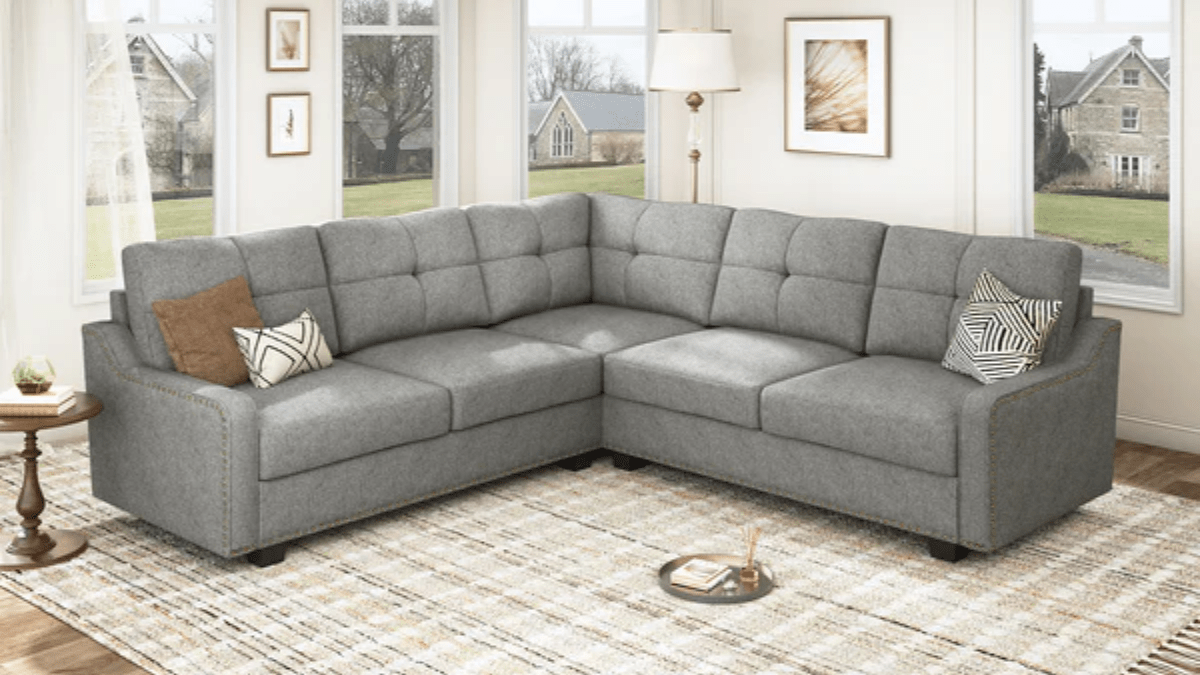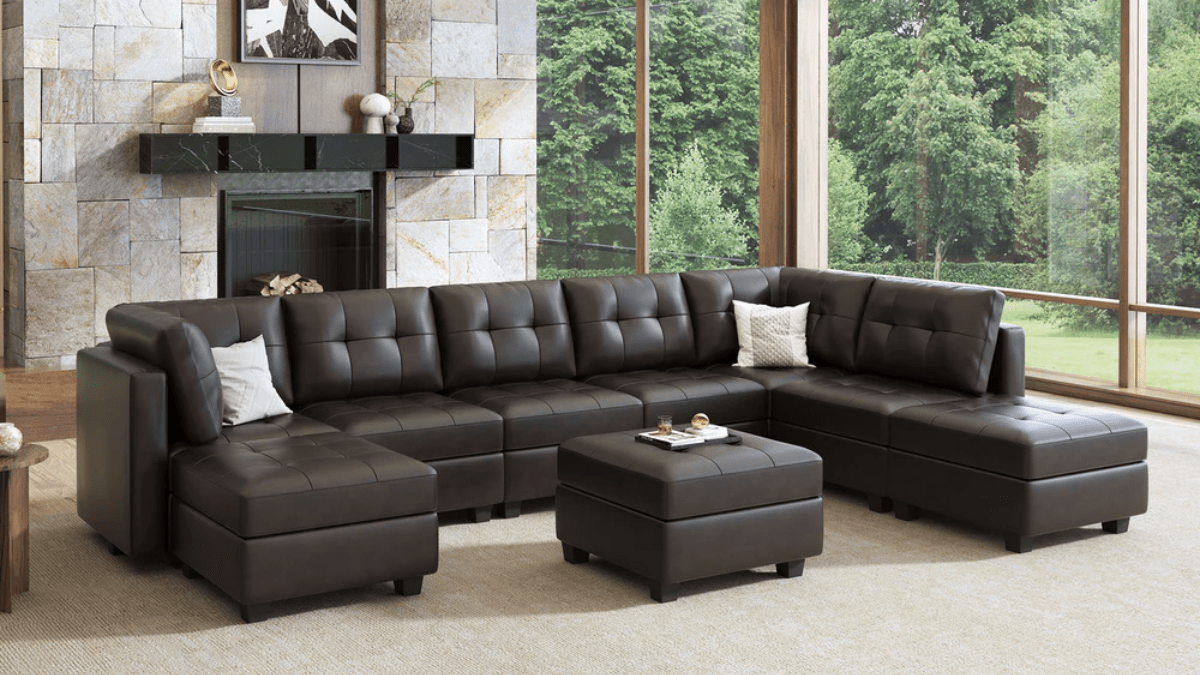Selecting the right couch for your home involves weighing several factors, from functionality to style. Two popular options, modular couches, and traditional couches, offer distinct advantages depending on your needs. Modular couches provide flexibility with their customizable, sectional designs, while traditional couches deliver a classic, fixed structure.
Comparing modular and traditional couches involves evaluating flexibility, cost, durability, and aesthetic appeal. Practical examples and a clear breakdown of these factors can guide you in determining which option best suits your lifestyle.
Flexibility: Adapting to Your Space

One of the most significant differences between modular and traditional couches lies in their adaptability. Modular couches consist of individual sections, such as corner pieces, armless seats, and ottomans, that can be rearranged to fit various layouts. This design makes them ideal for those who frequently move, rent their homes, or enjoy reconfiguring their living space.
For instance, a young couple in a small apartment might choose a product like the HONBAY 5-Seat L-Shaped Sectional Corner Sofa with Storage Ottoman. They could arrange it in an L-shape to maximize seating in their compact living room, taking advantage of its five-seat capacity and including an ottoman for extra functionality. Later, when they upgrade to a larger home, they could separate the pieces into a straight line or reposition the ottoman as a standalone footrest, adapting the setup to their new space without needing a new couch.
Traditional couches, by contrast, come as a single, fixed unit, typically in two- or three-seat configurations. Their static nature suits those with a stable living situation and a defined room layout. A family in a suburban house, for example, might choose a traditional couch to anchor their living room permanently against a wall, paired with a coffee table and armchairs. While less adaptable, this option ensures a consistent look without the need for adjustments.
If your priority is a couch that evolves with your circumstances, a modular design offers unmatched flexibility. However, if you prefer a set-and-forget solution, a traditional couch aligns better with a fixed lifestyle.
Cost: Budget Considerations

Price is a key factor when choosing between modular and traditional couches, as costs differ widely based on quality and features. Modular couches often carry a higher starting price due to their multi-piece construction and customization possibilities.
For example, a product like the HONBAY 4-Piece Polyester Modular Sectional Sofa With Storage Seat, priced under $1,000, offers a budget-friendly option with four rearrangeable sections and built-in storage. Typically, a basic three-piece modular set ranges from $800 to $1,500, while premium models featuring leather upholstery or additional functionalities can climb above $3,000. The option to add or replace sections over time can balance out the initial expense, making modular designs a practical choice for long-term value.
Traditional couches, being a single unit, typically have a lower entry cost, ranging from $500 to $1,200 for mid-range models. High-end versions with hardwood frames or designer fabrics can climb to $2,000 or more, but they generally lack the added expense of separate components.
For a retiree furnishing a den on a fixed budget, a traditional couch offers straightforward value without the complexity of additional purchases.
Your budget and willingness to invest upfront will guide this decision. Modular couches suit those who see value in future adaptability, while traditional couches appeal to those seeking simplicity and immediate affordability.
Durability: Longevity and Wear
How long a couch lasts depends on its build, materials, and daily use. Here’s a look at how modular and traditional couches hold up:
Modular Couches
- Made to endure with solid frames, like kiln-dried hardwood, and durable polyester fabrics, as seen in the HONBAY 7-Piece Polyester Modular Sleeper Sectional Sofa With Storage Space.
- Feature multiple sections joined by clips, brackets, or Velcro, which can loosen if moved often.
- In a busy home with kids, joints may wear out, needing occasional tightening or new parts.
- Best for moderate use with some upkeep to keep them in shape.
Traditional Couches
- Made as one solid piece, reducing weak spots in the structure.
- A quality model with a firm frame and strong stitching endures years without breaking down.
- Example: A couple with pets picks a traditional leather couch, its seamless build resists fraying and scratches with proper care.
- Downside: If a cushion tears, replacing it is trickier than swapping a modular section.
Aesthetic Appeal: Style and Design
The visual impact of a couch shapes your room’s atmosphere, and both modular and traditional options cater to different tastes. Modular couches lean modern, with clean lines and a contemporary feel that suits open-plan homes or minimalist interiors. Their ability to form unique shapes, like a U-shaped sectional or a sprawling chaise, makes them a bold statement. A graphic designer living in a loft might choose a gray modular couch to complement an industrial aesthetic, rearranging it to suit client meetings or personal downtime.
Traditional couches carry a timeless elegance, often featuring tufted backs, rolled arms, or curved legs that fit classic or transitional decor. In a Victorian-style home, a traditional navy couch with plush cushions could enhance the room’s heritage charm. While less customizable, their cohesive design offers a polished look that doesn’t require frequent tweaking.
Your aesthetic preference and home decor style will steer this choice. Modular couches favor modern flexibility, while traditional couches deliver a refined, consistent appearance.
Comparison Table: Modular vs. Traditional Couches
|
Feature |
Modular Couches |
Traditional Couches |
|
Flexibility |
High, rearrangeable sections |
Low, fixed design |
|
Cost |
$800–$3,000+ (varies by pieces) |
$500–$2,000+ (single unit) |
|
Durability |
Good, but joints may wear |
Excellent, fewer moving parts |
|
Aesthetic |
Modern, customizable |
Classic, cohesive |
|
Best For |
Frequent movers, dynamic spaces |
Stable homes, traditional decor |
Real-Life Scenarios
To illustrate these differences, consider two examples. Sarah, a 30-year-old renter, chooses a modular couch for her one-bedroom apartment. She starts with a two-piece set, forming a compact loveseat, and later adds a chaise when she moves to a larger space. The flexibility suits her transient lifestyle, though she occasionally tightens loose connectors after rearranging. Conversely, Mark and Lisa, a married couple in their 50s, select a traditional couch for their family room. Its sturdy frame endures their teenagers’ roughhousing, and its classic beige fabric matches their traditional home, no adjustments are needed.
These cases highlight how modular couches serve evolving needs while traditional couches provide reliability for settled households.
Maintenance Tips for Both Types
Both styles benefit from regular care. For modular couches, vacuum between sections weekly and check connectors monthly to ensure stability. Spot-clean spills with a damp cloth and mild soap. Traditional couches require similar vacuuming and cleaning, with added attention to cushion rotation to prevent uneven wear. For leather models of either type, apply conditioner biannually to maintain suppleness.
Making Your Choice
Deciding between modular and traditional couches depends on what you prioritize. A modular couch suits your needs if adaptability and modern design appeal to you, and a higher initial cost isn’t a concern. If durability, affordability, and a classic appearance are more important, a traditional couch stands out as the better choice.
Measure your space, set a budget, and consider your lifestyle, whether it’s hosting lively gatherings or relaxing in peace, to settle on the right option. Exploring options at HonbayMall or reaching out to contact us for guidance can help confirm which style aligns with your expectations.





Leave a comment
This site is protected by hCaptcha and the hCaptcha Privacy Policy and Terms of Service apply.